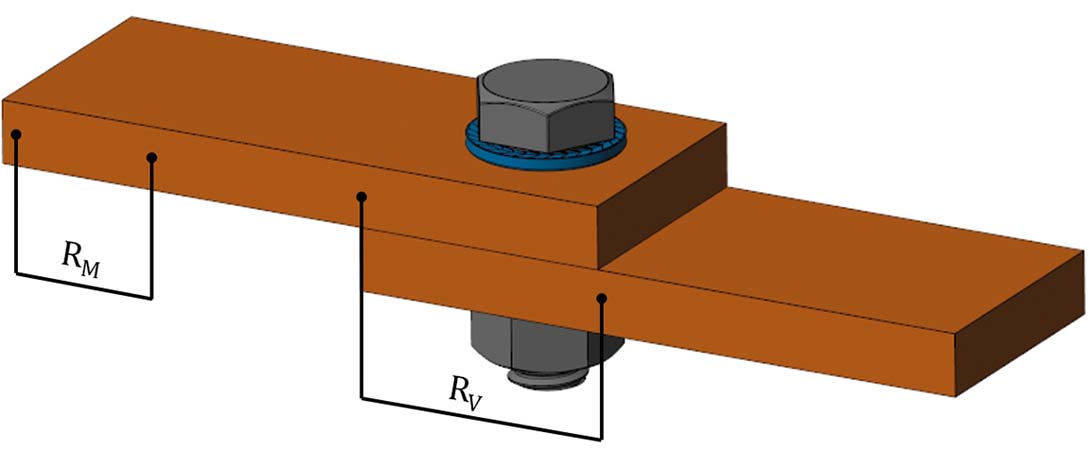
In the world of electrical engineering, loose screw connections can add up to costly power failures, which is why teckentrup has developed a locking element – the NSK-E – for reliable electrical connections.
According to a survey by a Canadian energy supplier, almost 40% of all power failures can be traced back to loose contact parts. Today, locking elements from mechanical screw connections are very often used, which are only partially – or not at all – suitable for the specific requirements of electrical screw connections and the related standards.
In practice, loose screw connections can lead to damage such as increased contact resistance, voltage drops/fluctuations (flickering), as well as the heating of contact points until it or surrounding equipment combusts. This calls for a new approach.
The main task of an electrical connection is to transmit power. Quality factor (ku) is decisive for assessing the joint/screw connection quality. This represents the ratio between the resistance in the joint and the resistance in the busbar.
 The aim of a joint is therefore to ensure the quality factor is kept as constant as possible over the course of its life. It is necessary to maintain the soft conductor material’s required contact pressure over the life of the joint, in order to keep the quality factor, and therefore the resistance, constant.
The aim of a joint is therefore to ensure the quality factor is kept as constant as possible over the course of its life. It is necessary to maintain the soft conductor material’s required contact pressure over the life of the joint, in order to keep the quality factor, and therefore the resistance, constant.
To achieve stable contact pressure, a screw connection must fulfil two functions – elasticity and the screw locking element. The elasticity function is necessary, because different thermal expansion coefficients and heavily fluctuating operating temperatures lead to varying mechanical tension in the screw connection. Furthermore, settling processes must be compensated. Due to the short clamping lengths, the elasticity required of the screw connection can only be achieved by flexible locking elements.
The screw locking element function is necessary as when screws work loose, as a result of vibration and lateral displacement, this can lead to a reduction in the electrical screw connections contact pressure and therefore the types of damage already described.
The solution
Thanks to the company’s many years of experience in mechanical screw locking elements, teckentrup GmbH + Co KG was able to react to the specific requirements and, as a result of appropriate testing methods, develop an optimum solution. In partnership with end users and external test labs, the NSK-E was successfully tested under extreme conditions. The test procedures it was subjected to include DIN 25201-4 (Annex B), DIN 267-26 and IEC 61373.
The NSK-E demonstrated outstanding performance in all quality inspections, meaning that the washer can be used as a locking element in accordance with most common standards. The washers are available in two variants – coated spring steel and stainless steel 1.4401. The washers are currently available in sizes M3 – M16 and can also be used in combination with conventional screws.
Thanks to its arched shape, the NSK-E has an especially pronounced spring effect, meaning the contact pressure and therefore the joint’s connection resistance can be kept virtually constant over a long period of time.
The enhanced teeth on the top side ensure a positive locking fit with the bolt head/nut. This ensures the components cannot work loose when subjected to cross loads. To prevent the soft connecting elements becoming damaged, the NSK-E’s underside features a runner like contour. When fitted in a tightened screw joint, the washer lies on the counter support, so that despite its short installation size, the risk of exceeding the surface pressure is reduced.
teckentrup concludes: “In the NSK-E, the user has a one part screw locking element, made from spring steel or stainless steel, which has been especially developed to meet the requirements of electrical screw connections.”

Having spent a decade in the fastener industry experiencing every facet – from steel mills, fastener manufacturers, wholesalers, distributors, as well as machinery builders and plating + coating companies, Claire has developed an in-depth knowledge of all things fasteners.
Alongside visiting numerous companies, exhibitions and conferences around the world, Claire has also interviewed high profile figures – focusing on key topics impacting the sector and making sure readers stay up to date with the latest developments within the industry.





